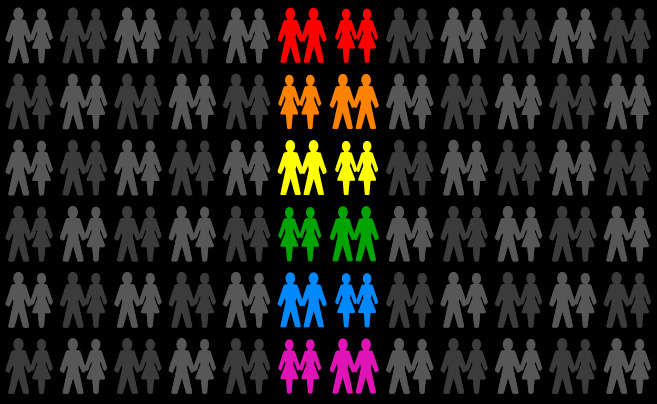In 2014, Mercer conducted a survey on LGBT (Lesbian, Gay, Bisexual and Transgender) Global Mobility. Of the 83 organisations surveyed, 48% had a global diversity and inclusion policy that made reference to LGBT employees, and 41% didn’t know if they had LGBT employees working internationally for their company.
The latter statistic may seem surprising, but when one considers the social stigma that may exist in some cultures, coupled with simply not wishing to divulge one’s personal circumstances to work colleagues, it makes more sense.
Sadly, there can be a lack of equality when it comes to the legality of moving a same sex couple versus traditional male/female couples. This makes it necessary to understand what proportion of your globally mobile talent pool may be LGBT in order to manage the logistical challenges that could arise.
There are a number of challenges and differences that organisations will face when moving a same sex couple. These can be wide-ranging, and only some can be within a circle of influence.
External challenges:
- A same sex couple that form a domestic or civil partnership may not be recognised as such in many countries. In Australia, for example, in the eyes of the law, same sex marriage is not recognised, and in many areas of the law, those in a same sex de-facto relationship do not have the same entitlements as those in a male/female de-facto relationship or marriage.
- This extends to visa requirements of a country, where technicalities may exist. Some countries don’t recognise same-sex couples and each individual would need to apply for a visa in their own right rather than as a couple.
- The employee(s) in same sex unions may not be as open about their personal lives, and unconscious bias or assumptions may exist about their personal circumstances in the absence of information.
- Societal changes are sometimes difficult to reflect in corporate policy. The changing definition of family, the awareness and acceptance of LGBT, adoption of children, and other societal norms will always be evolving, and what is considered ‘normal’ adapts.
Internal challenges:
- When devising diversity and inclusion policies, the question arises as to whether government policy should determine corporate policy. In countries like Australia, this would be considered unpopular, as the tide of popular opinion is one of inclusiveness and tolerance—yet, that same-sex marriage isn’t legally recognised is paradox. Thus, being able to derive policy independent of such influence that reflects your organisation’s culture and population is crucial.
- Creating a culture of inclusiveness doesn’t happen overnight. Capturing personal relationship statuses in preparation for relocation and other possible eventualities may be a difficult task, and in an effort to be more inclusive it may appear intrusive and have the opposite effect.
- Unconscious bias may exist within the organisation around whether individuals want to relocate to certain countries due to logistical or cultural acceptance issues or challenges.
- Historical use of language: traditional definitions and references to marriage and partnerships, such as husband and wife, may still be included in policies and widely used in conversation.
Tips:
Define who’s eligible
For the purposes of relocation—and other policies where marital status influences employee benefits—create a clear definition that can consistently be applied across policies. Consider length of time in a relationship, and how it will be proven. Will it be time spent living together? If so, how long? Establish whether the partner is entitled to benefits.
Honest dialogue and approach
If unaware of a relocating employees’ personal circumstances, it is important to broach the subject proactively, and with objectivity. Use gender neutral language with no presumptions.
Have a diversity and inclusion policy
In today’s modern age, awareness and acceptance for LGBT and other minority groups has hugely increased. To ensure these matters stay on the agenda for organisations, it’s becoming the norm to establish a ‘diversity and inclusion’ policy. For multinationals, ensure that this covers each country.
Be cautious of language
Adapting your language to reflect today’s societal norms takes effort. Review internal paperwork to ensure neutrality, and keep check of verbal and electronic communication to stay consistent.





